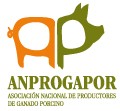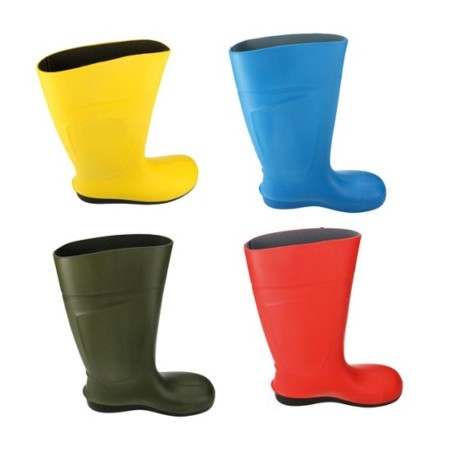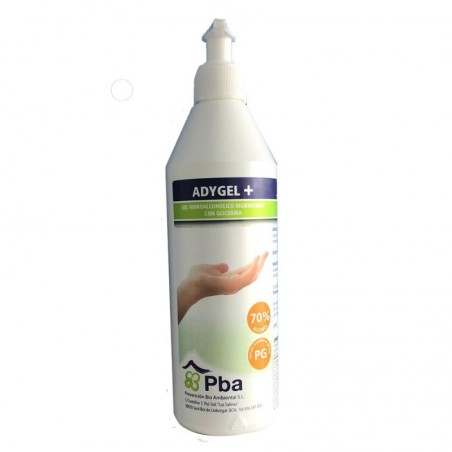
The crisis caused by the COVID-19 pandemic and the extraordinary measures being taken in many countries may affect the development of pig production. We want to provide a series of practical measures aimed at two areas of action:

- Prevention measures aimed at protecting employee health.
- Actions aimed at ensuring farm operation, in the areas of staffing (infected and/or confined persons) or restrictions on suppliers (logistics, decreased production, etc.).
It is important to emphasize that in the midst of the problems caused by COVID-19 we must not lower our guard against other pathologies common to the pig sector, such as ASF.
Prevention measures aimed at protecting employee health
Without disregarding the additional measures that may be necessary in the light of developments, and in coordination with official authorities, such measures should be taken:
1.- Informative measures. It is necessary to inform all workers about the disease situation, about preventive measures to avoid spreading the virus, and about the importance of their health for the proper operation of the farm. It is important to use information from official sources. Consult the appropriate authorities in your country.
Informative posters should be placed in view of the workers with information regarding the disease and hygienic-sanitary measures.
See "How to Protect Yourself," from the CDC
2.- General preventative measures
- Prohibit any unnecessary visits or entries on the farm to protect the staff. Visits by outside personnel should be restricted to sanitary actions by the responsible veterinarian or essential maintenance of the farm. Visitors should wear personal protective equipment and maintain a minimum distance of 1 meter from other farm personnel.
- Have soap and/or disinfectant products available in the farm's bathrooms and toilets. To note, an example of a surface disinfectant that could be effective against coronavirus (demonstrated effective against PEDV) is Virkon. Consult the manufacturers and other manufacturers of disinfectants.
- Encourage increased hand washing frequency
- Increase cleaning frequency of the common areas of the farm - mainly the changing rooms, bathrooms and common areas. Establish "firewalls" between people of different areas.
- Prioritize telecommuting for those administrative functions of the company where feasible.
- Promote internal communication through telematic means, whiteboards... Avoid direct contact at less than one meter between workers.
- Access the farm in independent vehicles. Avoid sharing vehicles. Avoid contact in farm-vehicle / farm-vehicle access.
- Limit and eliminate public transport to the farm as much as possible. Reinforce segregation of individual transports with entry and exit times. In the case of collective transport, the regulatory distance measures must be kept so that only one worker is in each vehicle. Only workers from the same shift or area belonging to the same segregated group and equipped with individual protective equipment can travel together.
- Avoid leaving the farm during working hours to go to any public place, such as a veterinary office, etc.
- Use masks at all times. Caution with use of gloves; it may give a false sense of protection, and dirty gloves are a risk. If gloves are used, it is recommended that they be changed very frequently.
- Establish "firewalls" between workers (in measures aimed at farm operation)
- Establish a body temperature control at the entrance of the farm. In the case of using a laser thermometer, first make individual calibrations, that is, measure the temperature with both the laser and a personal thermometer to obtain the reference value for each person. From there, a laser thermometer can be used and deviations from its standard must be evaluated with the body thermometer.
- People with a temperature higher than 36.5ºC (97.7ºF) or who present symptoms of COVID-19 coronavirus (cough, breathing difficulty, conjunctivitis, fatigue...) should call the attention line determined for each region and communicate immediately with the person in charge of their workplace. Meetings of more than 20 people should be avoided, unless it is absolutely essential. If it is necessary to hold a meeting, extreme precautions will be taken (avoid greeting with physical contact, respect the distance of one meter between participants, etc.)
- Avoid scheduled trips and avoid travel to locations other than the workplace (farm) and residence
- Suspend / postpone face-to-face employee training courses
Actions aimed at ensuring farm operation
Without disregarding any measures that may be taken by the appropriate authorities depending on the disease situation, a number of scenarios are proposed to maintain the operation and care of animals in an exceptional situation, such as the spread of COVID-19.
Within these measures are three categories:
- Measures to mitigate the impact if a worker tests positive for COVID-19
- Measures aimed at mitigating the impact in the event of the closure of the municipality or area. Access to farm.
- Measures outside the workplace
1.- Measures to mitigate the impact if a worker tests positive for COVID-19
This measure includes the options, evaluated by the technicians and managers who were consulted by the Association, to have a preventive plan. Almost all the measures are aimed at preventing the spread of the virus and avoiding contact between workers (creating "firewalls") so that, in the worst case, not all workers are affected.
1.1.- Farm staff

Apart from general measures to prevent the disease and its spread is proposed:
Option 1. Stagger workers by work department.
- Establish groups of workers by area or location on the farm. The groups should be made in such a way that there is no contact between them and physical separation can be established (by barn). Example: workers in breeding and workers in farrowing. Ideally, groups of one person could be established.
- Establish staggered farm entry and exit schedules by work areas or departments
- Cleaning and disinfection of clothing between groups of workers
- Distinguish different meal times when eating in common areas. Clean and disinfect common areas between each group.
- Use telematics for internal communications.
- Define work space, especially when driving animals between areas. Determine how far the workers sending animals and those receiving animals can go, so that contact does not occur within 3 meters or with a physical separation in between.
Objective of Option 1: In the unfortunate event that a worker becomes infected with COVID-19, that only his shift mates are affected by the quarantine measures, keeping the rest of the work groups operational.
Option 2. Differentiation of morning and afternoon shifts
Establish a morning and an afternoon shift
- The two shifts must not coincide physically on the farm. It is recommended that there be at least 1 hour between the end of one shift and the start of the next.
- At the end of the shift: cleaning and disinfection of the common areas for the next shift
- It is possible that 70% of the staff are on in the morning and 30% in the afternoon.
Objective of Option 2: In the unfortunate event that a worker becomes infected, only his fellow workers on the same shift will be affected, freeing up the other shift to be able to continue with the functions that need to be performed on the farm.
Option 3. Floating staff as a contingency plan
It is a complicated option to implement, but would be one of the few options available in the event that the entire staff cannot go to the farm, either because the staff is positive or because they are homebound.
- Have workers from other farms or contacts in nearby areas who can take over the functions of feeding and keeping the animals until the staff return
- Depending on the size of the company, the "mobile" staff would be determined, i.e. those who in exceptional circumstances could take care of the animals on another farm
- It is a difficult solution to implement because anyone outside the farm is not familiar with the operation
Objective of Option 3: To ensure the welfare of the animals and to guarantee that, even if the actual productive work on the farm is stopped, the animals would be provided with food, care and treatment if necessary.
1.2.- Boar stud farm
Due to the special nature of the work at the boar stud and the qualifications of the staff, the replacement and substitution of workers is very complicated and therefore preventive measures must be taken both inside and outside the boar stud.
At the boar stud level:
- Organize work in groups of employees avoiding contact within 1 meter
- Stagger the entry of groups of workers
- Same general protection and prevention measures as any farm
At the farm level, it is advisable to locate other sources of semen supply in case your boar stud has to reduce production.
1.3.- Feed manufacturers
Because of its importance, we believe that it should be treated as a farm. With 3 scenarios:
- Infection of workers.
- Establish differentiated work shifts
- Establish telematic communication or other alternatives to avoid contact between shifts
- Try to separate workers' entries, exits and workplaces according to their area or department of work
- Reduction in feed production capacity
- At farm level:
- Have an adequate supply of feed in the silos. It would not be advisable to wait until they are emptied (emptying is a very good measure to ensure the quality of the feed the animal eats)
- Locate other options from which to source
- Feed mill shutdown
- At farm level:
- Determine the amount of feed stored and whether or not it will be enough until the factory resumes operation
- Locate other options from which to source
- At farm level:
1.4.- Transport of raw materials, feed and animals
The aim is for the transporter to create a tight confinement area to eliminate any contact with the factory, farm or slaughterhouse personnel
- Establish specific truck entry and exit routes at the factory, farm and slaughterhouse (including washing and disinfection centers)
- No contact of the transporter with other workers (factory, farmers, etc.)
- Use telematic methods for instructions and orders
- Have receptacles or mailboxes in which to provide and collect documentation: delivery notes, guides...
- Carriers: complete journey without stops, especially avoiding stops in at-risk areas
1.5- Slaughterhouse
Although it is not a specific issue and it should be the slaughterhouse who establishes its protocols against COVID-19, from the farm's standpoint it is necessary:
- To know the animal "retention" capacity, respecting animal welfare if the slaughterhouse of destination has to reduce slaughter and extend slaughter times.
- Locate other options to where the animals can be moved
2.- Measures to mitigate the effects in the event of the closure of the municipality or area. Access to farm.
Without disregarding any new recommendations or obligations that may be established by the officials, in the case of the closure of a municipality, compromising access to the farm:
- Where necessary, sanitary routes shall be established to allow the entry and exit of persons, raw materials and processed products to and from establishments where food is produced, including farms, wholesale markets, feed mills and slaughterhouses
- Authorities must empower the worker(s) who may, on an individual basis, mobilize to ensure the operation of the production site
3.- Measures outside the workplace
- In this respect, a call is made for common sense to follow the instructions of official authorities. Avoid highly-concentrated areas of people but if not possible, keep at least 1 meter distance from others.
All measures implemented in the workplace must be agreed upon and authorized by the person responsible for Occupational Risk Prevention.
All the measures described here can be changed, improved, or reduced, depending on the evolution of the COVID-19 pandemic
March 17, 2020 - ANPROGAPOR








